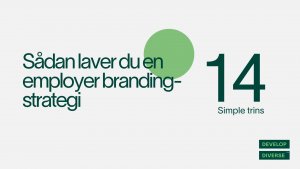DEIB will always be an uphill battle for every organisation. Goals can feel huge. Change can feel glacial and slow. And seeing impact takes a long time.
To create long-term change on DEI, organisations have to go beyond workforce representation. They need to proactively understand how and why bias exists within their organisation’s structures and systems, and which levers they can pull to scale widespread, sustainable impact that builds a better place to work.
In this post, we asked six organisations what their most impactful strategy has been to create tangible change on DEIB. Here’s what they said.
1. Implement flexible parental leave policies.
“Creating a family-friendly workplace is key for supporting parents,” says Teresa Salazar García-Rosales, international tech recruiter at remote work meeting platform Parabol. “But when we did our research, we found out a lot of companies may end up stigmatising parents who ask for better work/life balance policies. We didn’t want to go down that route, so we made flexible work arrangements the standard instead of something you had to opt into.”
At Parabol, everyone has the freedom to choose their own work hours and can work from wherever they want. This gives parents flexibility in how to balance work with childcare.
“What might work for a parent might not work for someone else,” Teresa says. “For example, some parents may prefer to take a shorter parental leave and then reduce their hours, while others may want to take a longer leave and then return to full-time work. Some may want to take a break in the middle of the day to pick up their kids from school or daycare, while others may prefer to have an intensive workday so they can focus on their family after work.
“We value our teammates and want them to find the best solution for them. The only way to do that is to empower parents to make their own decisions about how they want to work.”
2. Safeguard compensation equity.
Despite what the law says, we don’t all get paid the same for the same work. Bias and discrimination lurk hidden away in organisations’ pay practices, performance frameworks, and promotion processes, meaning marginalised folks aren’t given the opportunity to earn like their White peers. When Virgile Raingeard founded Figures, a salary benchmarking tool, he was intent on trying to improve pay equity and eliminating pay gaps — both for the organisations the company serves, and from within.
“Powering improved pay equity is part of our mission and we want it to reflect in our company culture,” he says. “Since we’re all about fair compensation in our product and company mission, when it comes to compensation decisions, we like to keep things objective and transparent: No shady backroom deals or mystery paychecks here! We’ve got a solid system in place that involves determining levels, using Figures’ benchmarking data, and, best of all, complete transparency on salaries internally. After all, a happy and well-compensated team is a productive and thriving one. That said, we’re not perfect, and we try to constantly improve ourselves.”
3. Proactively diversify company leadership at a board level.
Company leadership has historically been a job reserved for White males. In 2015, there were more CEOs named John in US companies than women CEOs in total.
Thankfully, we’re starting to change the record on that front with increased legislation. Across the EU, the CSR Directive will soon mandate that all companies meeting a certain earnings or headcount threshold will be required to report on their workforce diversity. They’ll also have to increase gender diversity at a board level.
But progress is still slow – and to really move the needle, organisations need to proactively increase board diversity themselves, rather than waiting for legislation to enforce it.
“When building our board, it was important to me that we had diverse representation,” says Amy Spurling, founder and CEO of employee rewards and benefits platform Compt. “People want to work in places where they see themselves represented — and that starts at the very top. Our platform supports all employees, everywhere. That means we need to have a team representing our users to build the best possible solution. From day one it was my mission to have a diverse team, and that included having a diverse board.”
Amy’s focus on creating greater representation at a board level has meant employees feel better represented, too.
“Representation at the board and leadership levels makes it much easier to hire throughout the organisation,” she says. “People want to work somewhere where they can see themselves represented, which has to be visible at all levels. You need diversity in your leadership team and throughout your organisation so people see they have the opportunity for career growth and mobility. By having a diverse board, we have been able to hire a diverse leadership team. That has translated into a diverse overall team. It’s a beautiful virtuous cycle of amazing talent.”
4. Offer “returnship” opportunities to help employees return to work after a career break.
Women consistently face more discrimination than men when the topic of parenthood comes up at work. According to 2022 research, women with children face more rejection in the hiring process than women without children, men with children, and men without children. And even when they don’t have kids, 10% of employers are reluctant to hire them just in case.
“One common challenge we have witnessed is the difficulties faced by individuals re-entering the workforce after a career break,” says Dr Ximena Hartsock, co-founder of BuildWithin, an apprenticeship platform. “Resume gaps are often seen as weaknesses, hindering [candidates’] chances of finding suitable employment. Returnships play a crucial role in addressing this issue.”
After becoming a parent herself, Dr Ximena realised that there was a need to create more opportunities for women to return to work. It’s why she offers returnships at BuildWithin.
“We fully embrace returnships in our workplace, recognizing the immense value that moms bring to the table,” says Dr Ximena. “Returnships for individuals who have taken a break offer a unique opportunity for transitioning into new roles and acquiring additional skills that can be applied to their job. By creating a supportive environment that values the unique experiences and capabilities of individuals, returnships benefit both the employee and the company.
“One of our most valued employees returned from maternity leave earlier this year, and her comeback has been truly remarkable,” Dr Ximena adds. “While she has always been extremely competent, she came back bursting with new skills, fresh perspectives, and an unwavering determination to excel in both her professional and personal life.”
5. Enable the creation of meaningful Employee Resource Groups and networks for marginalised employees.
For Indra Gutiérrez, president of construction services company Gutier, working in an industry dominated by men gave her the idea to launch a supportive network where women felt seen, heard, and represented in the workplace. “During my career, I never had anyone coach me or give me advice on how to navigate the professional world as a minority woman,” Indra explains. “There were so many challenges I had to overcome and I wish someone had warned me about, but instead I had to find out through my own life experiences. I decided to launch [a women’s group], as having always been one of the only women working in a male-dominated industry, I noticed there were no workshops that share [that experience].” Indra’s initiative focuses on providing workshops, conferences, and activities with a goal of nurturing women’s leadership skills across the company. But it’s as much an opportunity to learn as it is to share experiences. “The impact has been tremendous,” Indra says. “I asked myself, how do you help prepare the next generation of female leaders? My mission is to share the knowledge and tools for women to lead fearlessly.”
6. Offer employees greater choice on where they work.
The last couple of years have upturned the global workplace. Employees have tasted freedom from the confines of a centralised office — and they want more. But as some companies have mandated that employees return to the office post-pandemic, Thomas Forstner, VP People and Talent at Juro, had a different take.
“At Juro, we made the decision to implement a choice-first work approach,” he says. “What that means is that within a given location, you have the choice from day one to work from our hub — based in London — or work remotely. That policy goes whether you’re just a short distance from the hub, or whether you’re further away. For us, it’s a way of saying we care about the work you do, not where you do it from.”
For Juro, this extra flexibility on where people work increases inclusion because it gives people a choice of how and where they show up.
“This has made the biggest difference to inclusion and belonging because typically people who aren’t White, male, straight, cisgender, and in their 20s, have more requirements on flexibility at work,” Thomas says. “Whether that’s because they have a family, a pre-existing condition — or whether they just work better at home… A choice model makes people feel they can interact with us as an employer and integrate us into their pie chart of life. Work is a part of that — but non-work is too.”
__
Develop Diverse is an inclusive communication platform that enables organisations to build in the communication norms that build more inclusive, diverse workplaces. Based on a combination of cutting-edge research and AI, Develop Diverse’s text analysis tool helps organisations proactively spot discrimination and bias in written text, make inclusive switches, and scale a culture of inclusive communication across the whole company.





